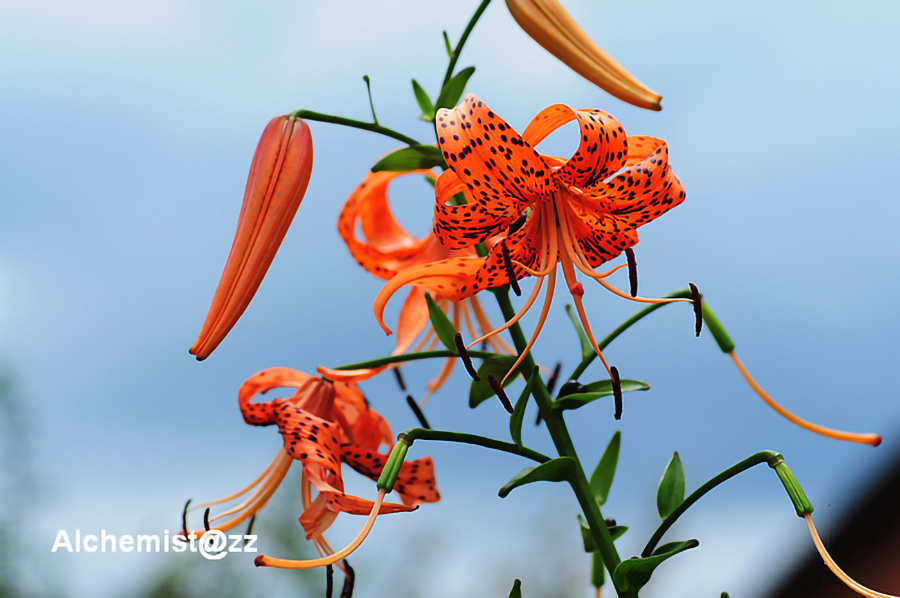- Scientific Name: Lilium lancifolium Thunb.
- Ref: Trans. Linn. Soc. London 2:333. 1794
- Synonyms:
- Lilium leopoldii Baker
- Lilium lishmannii T.Moore
- Lilium tigrinum Ker Gawl.
- Lilium tigrinum var. plenescens Waugh
- English Common Name: tiger lily
- Chinese Common Name: 卷丹 juǎndān
- Japanese Common Name: オニユリ [鬼百合] oniyuri, テンガイユリ [天蓋百合] tengaiyuri
- Family: Liliaceae
- Genus: Lilium
- Distribution: Thickets, grassy slopes, hillsides, river banks; 400–2500 m. Anhui, Gansu, Guangxi, Hebei, Henan, Hubei, Hunan, Jiangsu, Jiangxi, Jilin, Qinghai, Shaanxi, Shandong, Shanxi, Sichuan, Xizang, Zhejiang [Japan, Korea]. Lilium tigrinum is widely cultivated in China for its edible bulbs and medicinal uses.
Bulb broadly subglobose, 4--8 cm in diam.; scales white or yellowish white, broadly ovate, 2.5--3 × 1.4--2.5 cm. Stem streaked with purple, 0.8--1.5(--2) m, minutely white woolly, sparsely papillose proximally. Leaves scattered, sessile, oblong-lanceolate to linear-lanceolate, (3--)6.5--9(--18) × (0.5--)1--1.8 cm, white woolly, 5--7-veined, axil with bulblets (on distal leaves), margin papillose, apex acuminate. Flowers 3--6(--20) in a raceme, horizontal to nodding. Tepals vermilion, with dark purple spots; outer ones lanceolate to oblong-lanceolate, 6--10 × 1--2 cm; inner ones broadly lanceolate to narrowly ovate, slightly wider; nectaries papillose and with fimbriate projections on both surfaces, densely so proximally on adaxial surface. Stamens diverging; filaments light red, 5--7 cm, glabrous; anthers ca. 2 cm. Ovary 1.5--2 cm. Style 4.5--6.5 cm. Capsule (in diploid plants) narrowly ovate-oblong, 3--4 cm. Fl. Jul--Aug, fr. Sep--Oct. 2 n = 24*, 36. (Flora of China)
